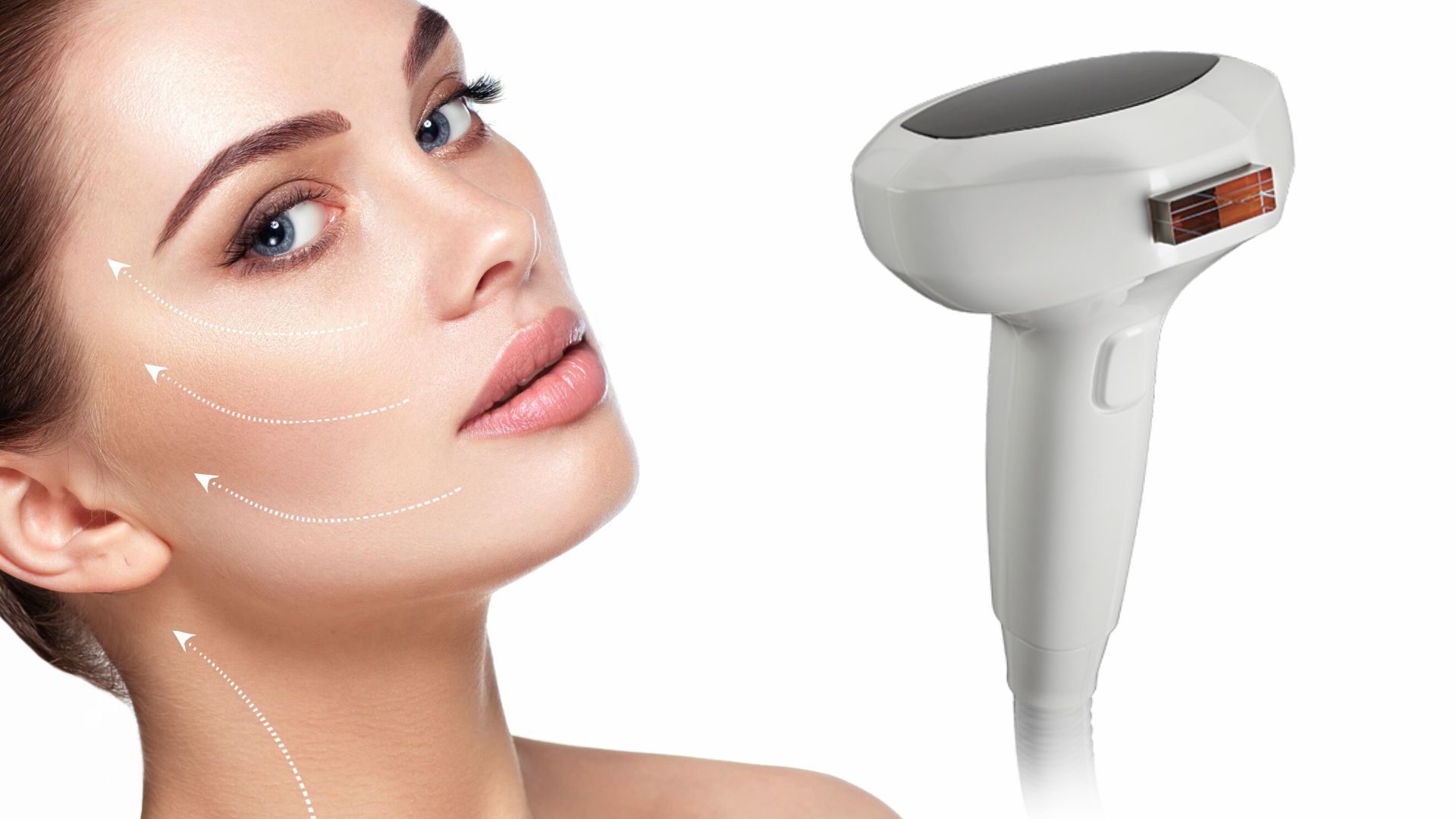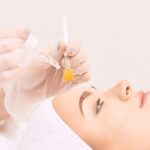Photorejuvenation via Lumecca IPL
Content
Pigmentation and the main causes of its appearance
Pigment spots are formed when melanocyte cells in certain areas of the skin begin to produce too much natural pigment – melanin. It is responsible for coloring human skin, hair, and the iris of the eyes. The higher the concentration of melanin, the darker the color becomes. At a young age, the pigment is formed under the influence of bright sunlight.
Hyperpigmentation appears at a more mature age, which is a consequence of the thinning of the basement membrane that separates the epidermis (the top layer of the skin) from the dermis (the underlying layer of the skin). As a result, the pigment embedded in the deep layers of the skin begins to appear on the surface, unevenly forming age spots.
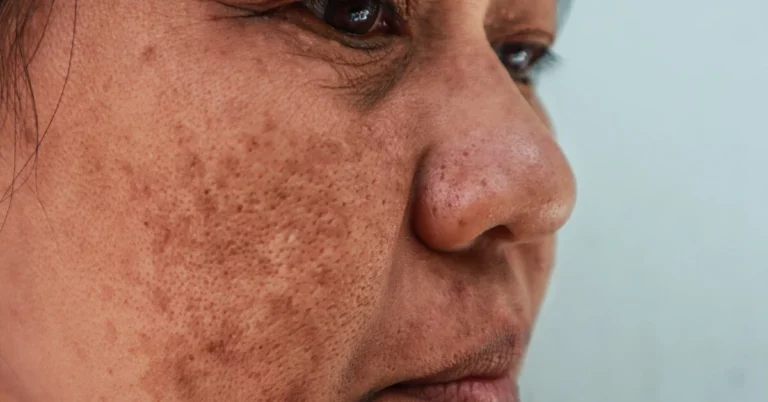
Also, age spots are formed under the influence of various hormonal changes. The skin is hormone-dependent, so sex hormones have a significant effect on the processes of cell division of the epidermis, the secretion of the sebaceous glands, the function of the hair follicles, and the synthesis of melanin. Fluctuations in their levels in the body of women (during the ovulatory cycle, pregnancy, menopause, and taking oral contraceptives) are reflected in all these processes. For example, a third of women using oral contraceptives have melanosis, that is, the accumulation of melanin in the tissues of internal organs and skin. Other hormones also influence the mechanisms of melanin synthesis, for example, adrenocorticotropic, thyroid-stimulating, and somatotropic hormones of the pituitary gland.
The likelihood of age spots is higher in people with fair skin and directly depends on the number of hours spent in bright sunlight: often age spots appear even in young people after a vacation.
Types of pigmentation
Hormonal melasma or skin melanosis. It usually occurs in brunette women with the IV skin phototype. Irregular spots are located on the forehead, chin, symmetrically on the cheeks, upper lip, and temples. Their occurrence is associated with a change in the ratio of estrogen and progesterone, and the color depends on the total dose of ultraviolet radiation.
Pigmentation can appear in girls during puberty, and in women with inflammatory gynecological diseases, while taking oral contraceptives. Often, chloasma disappears on its own after the first menstruation, first birth, or discontinuation of contraceptives, but sometimes it can persist for many years.
Hyperpigmentation of the eyelids occurs in women after 25 years of age as a result of excessive ultraviolet radiation with an imbalance of hormones (diseases of the thyroid gland, ovaries, and adrenal glands) and genetic predisposition. Before this age, spots can also occur when using oral contraception, certain medications, and cosmetic preparations containing citrus fruit oil.
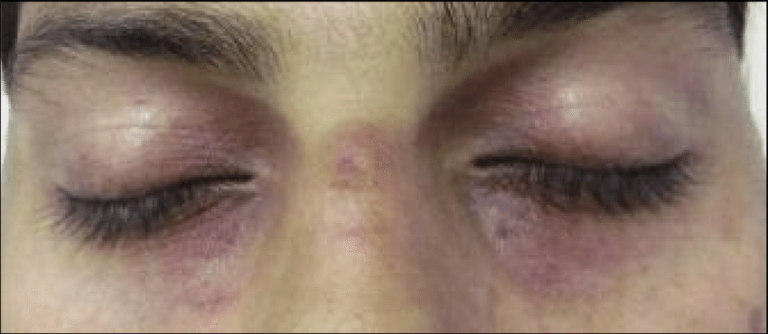
Senile lentigo (liver spots) – has the appearance of small spots of round, oval or irregular shape, mainly on the face, neck, and hands. Color can be from light to dark brown. Their appearance is explained by a decrease in the total number of melanocytes (by 8% every 10 years after the age of thirty), impaired pigment transport to keratinocytes, and thinning of the basement membrane. At the same time, the density of pigment cells in places exposed to the sun is maintained or even increased, which leads to the appearance of a marker of skin photoaging – speckled pigmentation.
Broca’s pigmentosa are symmetrical yellowish-brown patches with indistinct borders in the submental region, nasolabial folds, and around the mouth. The cause may be dysfunction of the ovaries or the gastrointestinal tract.
Photorejuvenation removes age spots
Age spots, as a rule, do not pose a risk to health, but their presence, especially on the face, makes a person feel much older. Large age spots that usually occur after improper tanning are a problem even for young people.
Today, there are many ways to deal with these age spots but photorejuvenation remains one of the most popular procedures in the world. It is simple, fast, painless, and very effective.
Photorejuvenation is based on the IPL principle. It consists of the action of bright intense flashes of light on the cells of the body responsible for the coloring of tissues.
The most powerful IPL system in the world today is Lumecca. It is based on the technology of selective photothermolysis, which is able to make the skin perfect in just 1-2 treatments!
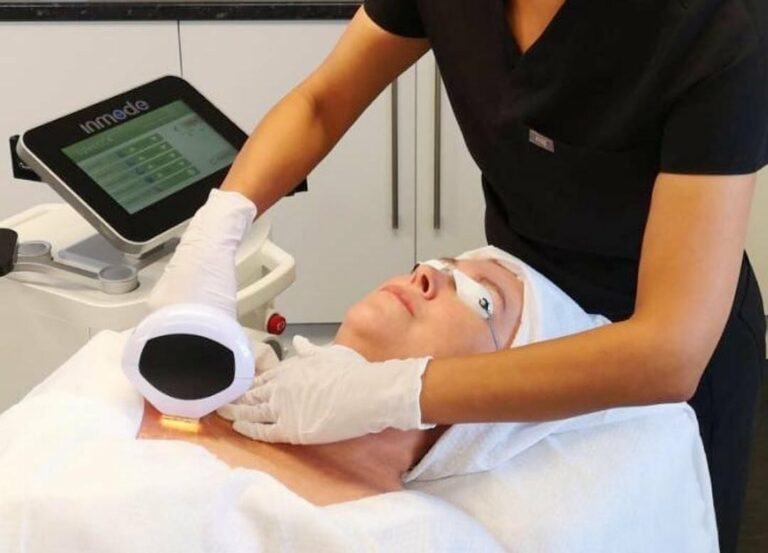
Lumecca solves many problems at once: evens out the skin color, removes vascular pathologies, and age spots, and improves skin texture. The high energy density of the IPL and the shortest pulse time of all devices on the market allow you to fight pigment spots of any origin at any depth without causing burns and providing a pronounced result in the shortest possible time. This procedure can be done at any time of the year. Even in summer!
Indications for Lumecca photorejuvenation
Contraindications for photorejuvenation
- Dark spots
- Vascular manifestations
- Freckles
- Enlarged pores
- Acne, post acne.
- Hypersensitivity, photophobia
- Skin lesions and acute inflammation
- Chronic skin diseases in the area of the proposed procedure
- Severe somatic diseases
- Oncological diseases
- Pregnancy and lactation (the procedure can be done one month after stopping feeding)
- Autoimmune diseases (with autoimmune thyroiditis it is allowed, bypassing the thyroid zone)
- Herpesvirus infection (Herpes Simplex) in the acute stage.
Advantages of photorejuvenation via Lumecca
Lumecca is suitable for all skin types. The procedure, unlike similar ones, does not have seasonal restrictions when correcting vascular disorders and removing local pigment spots. The procedure can be carried out even in the summer before the holidays.
The nozzle of the device is equipped with a cooling system, which makes the procedure comfortable and painless.
The doctor selects radiation and cooling parameters individually for each patient. The doctor regulates the intensity of the outbreaks, their duration, and the intervals between them.
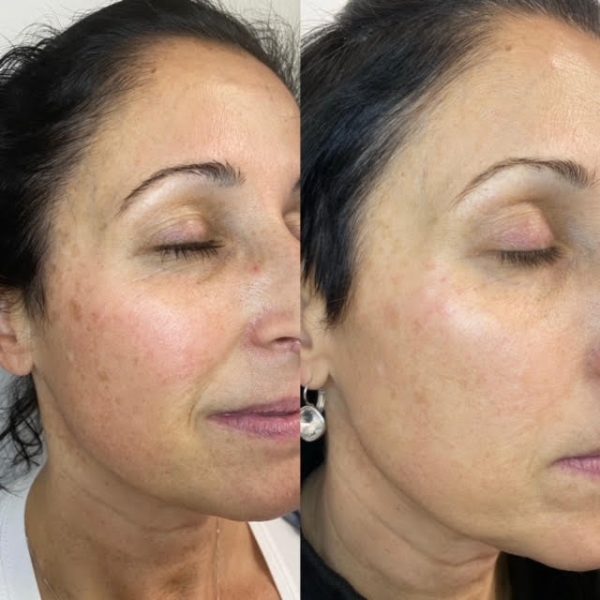
How Lumecca photorejuvenation works
The Lumecca handpiece provides the ability to treat a wide range of skin types and treat various skin problems, from unwanted facial pigmentation, superficial vessels, and skin texture disorders, to freckles.
During this procedure, the skin does not overheat – the built-in cooling system with a sapphire tip makes the procedure almost painless.
The Lumecca handpiece uses IPL (intense pulsed light) technology with a modified spectral range. Lumecca amplifies short wavelengths in the 500-600 nm range by 40% compared to standard IPL devices, providing higher energy density in the peak light absorption range of melanin and hemoglobin. Does this really matter? The fact is that it is in this range that melanin and hemoglobin absorb the greatest number of light waves. This is of particular advantage in the correction of vascular disorders and pigmentation. There is a double enhanced effect compared to unmodified IPL technology. Thus, the number of procedures can be reduced.
Lumecca technology is based on the selective absorption of radiation by colored tissues (pigment is the body’s response to ultraviolet), which causes them to heat up and destroy. It is important that the impact of the device does not apply to healthy tissues.
Lumecca’s light pulses cause the melanin (skin-coloring pigment) contained in the skin cells to disintegrate, which leads to the disappearance of pigmentation. At the same time, the skin in the treatment area acquires tone and elasticity, enlarged pores narrow, and metabolism in the tissues is restored.
After the first procedure, the complexion evens out. But in order to get rid of extensive age spots, a course of procedures is required, which can include from two to 4-5 sessions.
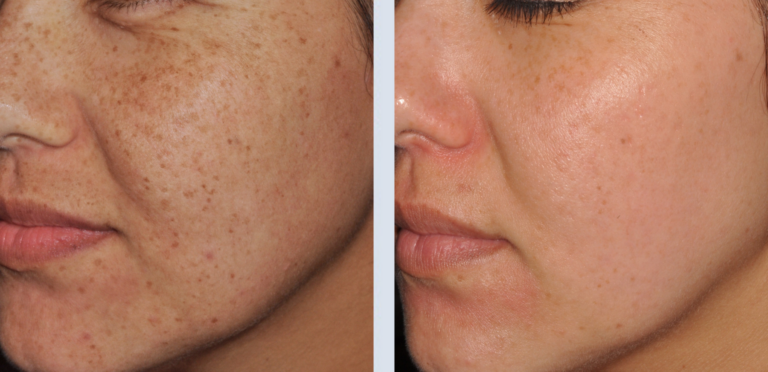
Photorejuvenation and skin restoration after the procedure
In the first stage, the skin at the site of the intended impact is cleansed of contamination. For tight contact with the Lumecca nozzle, a thin layer of a special gel is applied to it.
The doctor selects the optimal IPL energy parameters and the degree of cooling.
In the second stage, after adjusting the device in accordance with the individually selected parameters of light energy, the doctor begins the treatment. The cooling feature does not allow the skin to heat up and ensures the comfort of the photo-thermolysis process. During the procedure, a slight burning or tingling sensation may be felt in the treated area.
The duration of the procedure depends on the amount of work but usually does not exceed an hour.
Skin restoration after photorejuvenation
Immediately after the procedure, there may be slight redness of the skin, which disappears after 1-2 hours.
At the site of skin treatment, slight swelling and the appearance of small hematomas (bruises) are possible, gradually disappearing within a week.
During the procedure or after it, the pigment spot becomes darker, and after 1-2 weeks it peels off.
After removing age spots, you can immediately return to your usual lifestyle. However, it is not recommended to visit a sauna, or solarium and take natural sunbathing for about 2-3 weeks. To prevent the appearance of new age spots when going outside in the warm season, it is necessary to apply a protective cream with a high (at least 50 SPF and PPD) degree of protection against ultraviolet radiation to the skin.
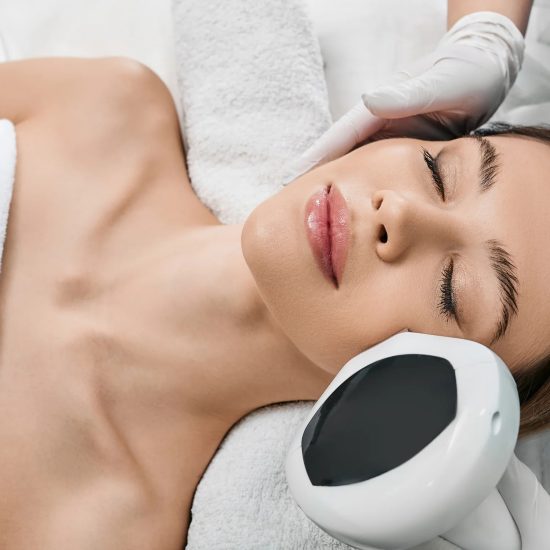
Effects of the procedure
- Elimination of small and large age spots (the first ones disappear after the first session), as well as freckles
- Smoothing fine linear wrinkles
- General compaction and strengthening of soft tissues
- Narrowing and cleansing of pores
- Healthy and fresh-looking skin.
When to expect the result and how long the effect lasts
The visible effect occurs 2 weeks after the procedure. More noticeable results occur after 2 procedures. The final result is evaluated after a course of procedures. In general, the skin will look perfect for at least a year.
At what age can the photorejuvenation procedure be performed?
IPL is safe and proven for men and women of all ages, and while the face is the most commonly treated area, it can also be used anywhere on the body, even in sensitive areas.

